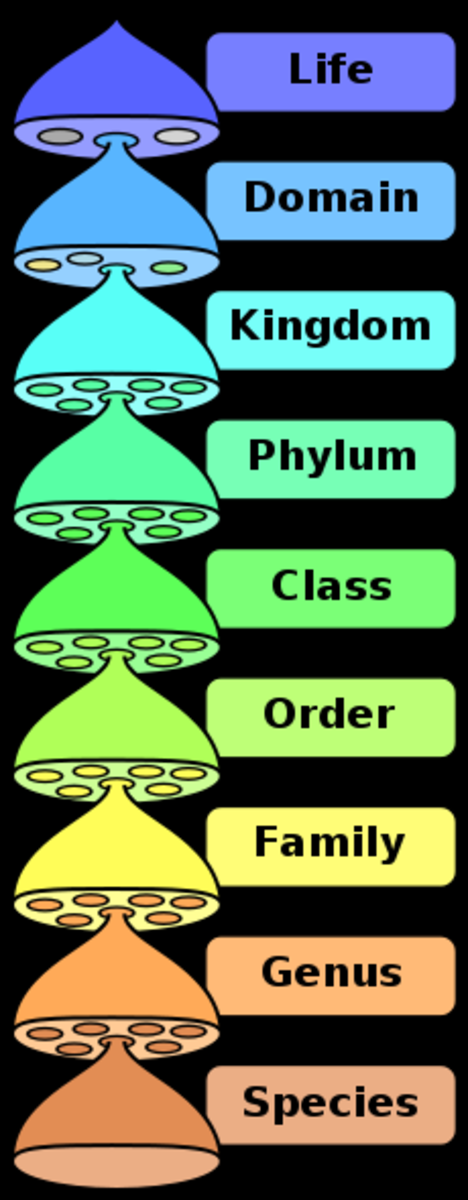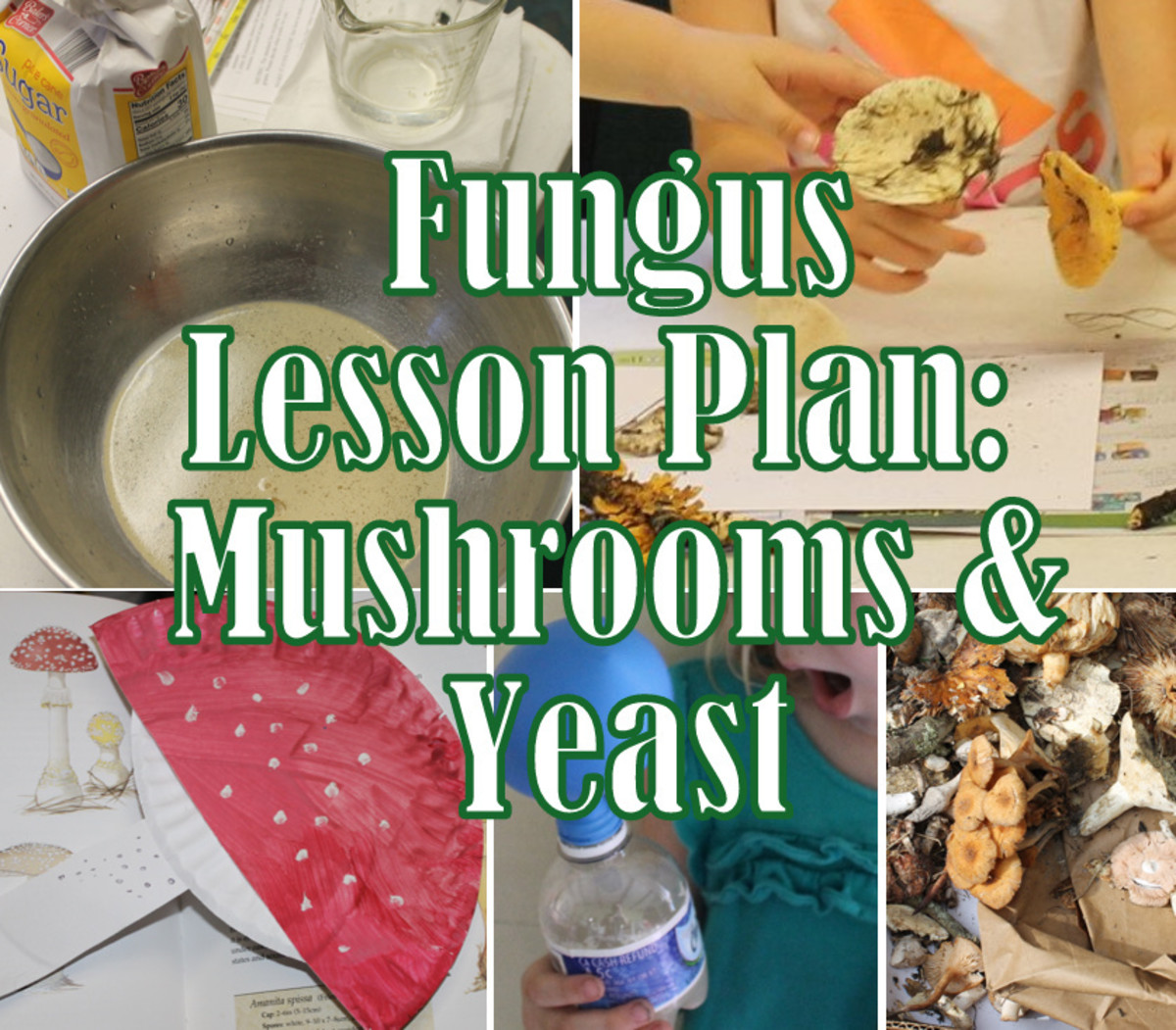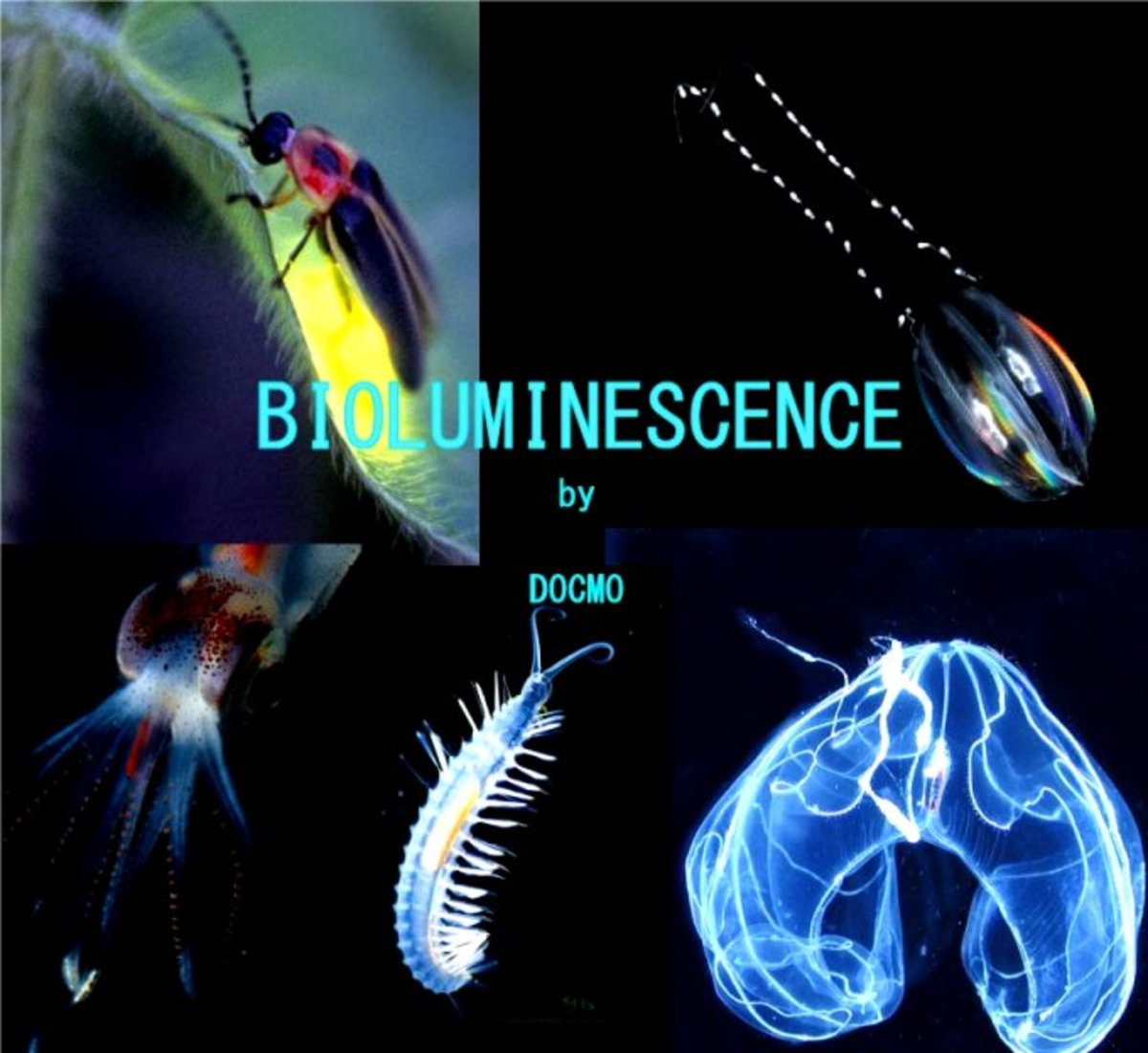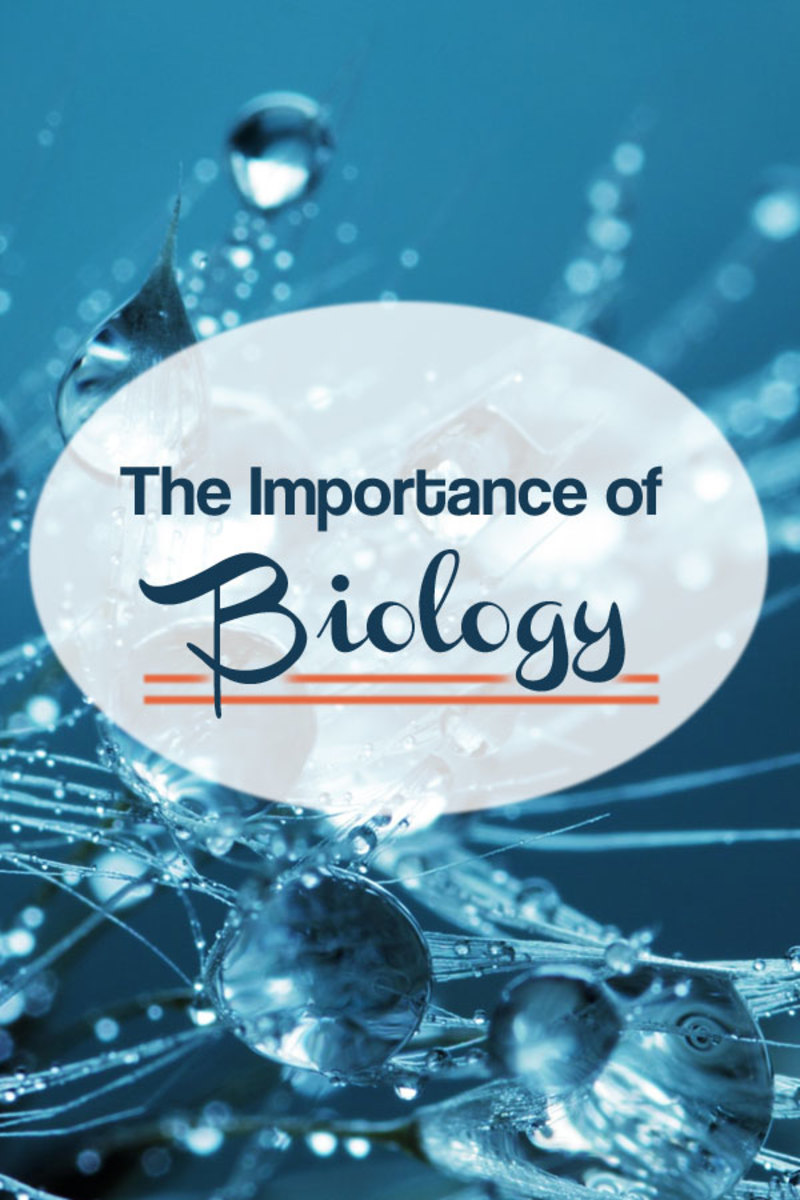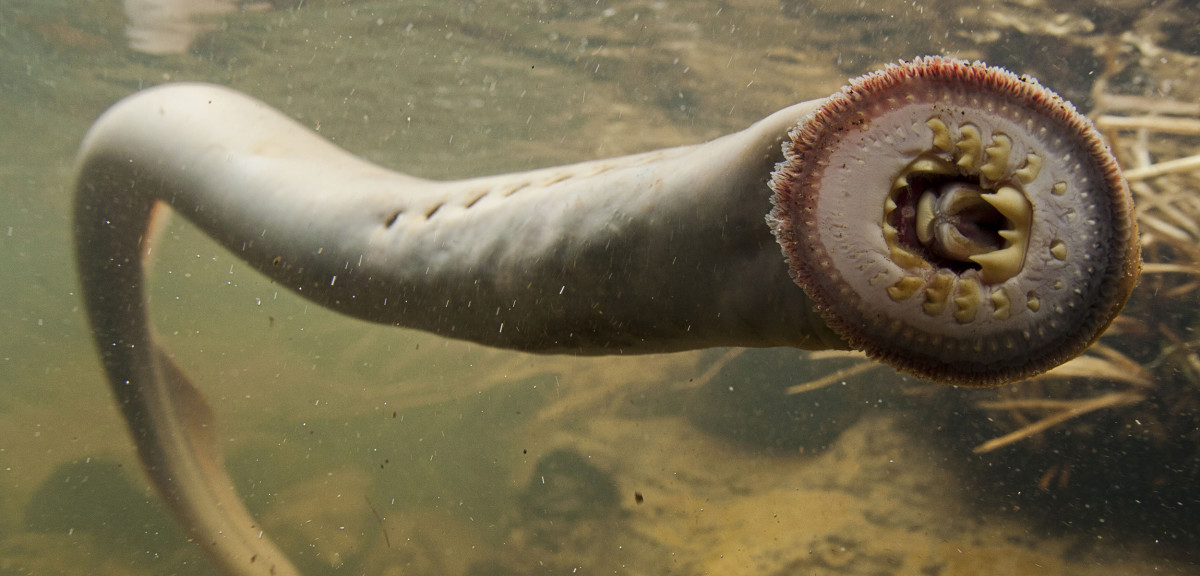Fungi Kingdom
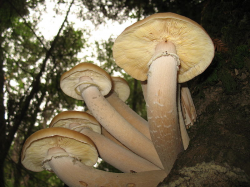
Fungi Kingdom: Information, Youtubes, Photos, and Other Resources
The Fungi Kingdom includes mushrooms, molds, yeasts, rusts, puffballs, truffles, morels, yeasts, and numerous other organisms. Some fungi are microscopic single-celled organisms while others are huge multicellular organisms! Have you seen mold growing on bread? That's a type of fungi. Yeast that we bake bread with is also a type of fungi.
Most people think of mushrooms as being plants, but they're not! Read on to find out more about mushrooms and other types of fungi!
The Fungi Kingdom
Mushrooms are not plants! Mushrooms are fungi.
We often think of mushrooms and other fungi as being plants because they do share several of the characteristics of plants, but they are not plants at all. Fungi have their own kingdom: The Fungi Kingdom.
As a review from previous biology lessons, all organisms are classified into one of three domains: archaea, bacteria, and eukaryote domains, and then into one of six kingdoms. The Kingdoms are Archaebacteria, Eubacteria, Protista, Fungi, Plantae, and Animalia.
Scientists categorize organisms based on their similarities. Some of the characteristics that are used to determine which category an organism goes into include cell type, metabolism, and means of reproducing.
Fungi are eukaryotic organsims. They need oxygen for metabolism. They absorb their nutrition from their environment.
A Bioluminescent Mushroom
Look how big this bioluminescent mushroom is!
A bioluminescent mushroom
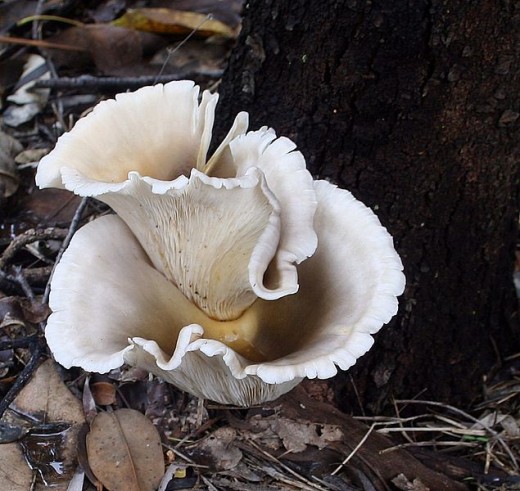
Although most mushrooms are not bioluminescent, the one above is. Bioluminescent means it gives off light. When it's dark outside, you can actually see some light coming from this mushroom! The gills of the mushroom are the most luminescent part. They give off a greenish light.
Below is a photo of a bioluminescent mushroom glowing in the dark.
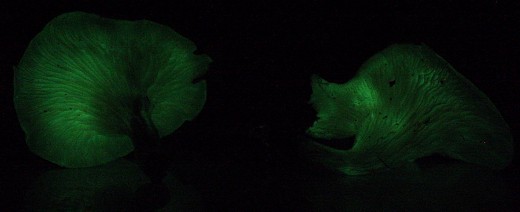
What's the difference between toadstools and mushrooms?
- Before you scroll any further down this page, why not take this fun one question quiz?
You'll find the answer farther down this page, but don't peek at the answer yet!
What do you think? What's the difference between toadstools and mushrooms?
Did you know?
Despite their many similarities to plants, scientists believe that fungi are more closely related to animals than they are to plants!
Fungi
Characteristics of Fungi - The Fungi Kingdom includes mushrooms, yeasts, and molds.
Fungi share many characteristics with plants, but they are not plants. Fungi are not animals either.
- Fungi are heterotrophic organisms. This is one of the characteristics that's different between plants and fungi. Plants are autotrophic, which means they make their own food. Plants have chlorophyll, a green pigment which they use in photosynthesis. Fungi do not have chlorophyll, which is why most fungi are not green.
- The cell walls of fungi contain a substance called chitin. Chitin is the same tough substance that is found in the hard outer covering of insects. Plant cell walls, on the other hand, contain cellulose.
- Fungi are made of long filaments which are woven together. These filaments are called hyphae. A mass of hyphae gets woven together into a mycellium
- Although both plants and fungi engage in mitosis, there are some differences in the process. When mushrooms are undergoing mitosis, the nuclear envelope of the cells does not disintegrate as it does in plants. This causes spindle fibers to form inside the nucleus. The spindle fibers then pull the chromosomes to the opposite sides of the nucleus, instead of to the opposite sides of the cell as occurs in plants and most other eukaryotes.
- Fungi use sporesto reproduce.
- Fungi have an alternation of generations life cycle, just like plants.
- Fungi are non-vascular, which means they don't have a transport system that carries water and nutrients throughout the organism.
- Fungi digest their food before eating it! They do this by secreting enzymes onto their food then absorbing the nutrients.
An Animated Slide Show about Fungi
- The Fungi Kingdom: Common Characteristics of Fungi
What is a fungus and how do they differ from plants and animals?
The link above will take you to an animated slide show about fungi!
Fungi are heterotrophic....
....which gives them some extra freedom
Fungi are heterotrophic and therefore are not dependent upon the sun in order to eat (although most of the things that they eat are dependent upon the sun). This means that they can grow in dark places and can grow in any direction. They don't have to grow toward the sun like most plants do!
What's the difference between toadstools and mushrooms?
Here's where you'll find the answer to the quiz near the top of this page!
Toadstools and mushrooms are the same thing. There is no scientific difference. People often call the poisonous ones toadstools, but that is misleading as many types of organisms that are called mushrooms are poisonous.
A Poisonous Mushroom
Your mom taught you not to eat mushrooms you find outside, right? There's a good reason for that!
This mushroom can be fatal when eaten
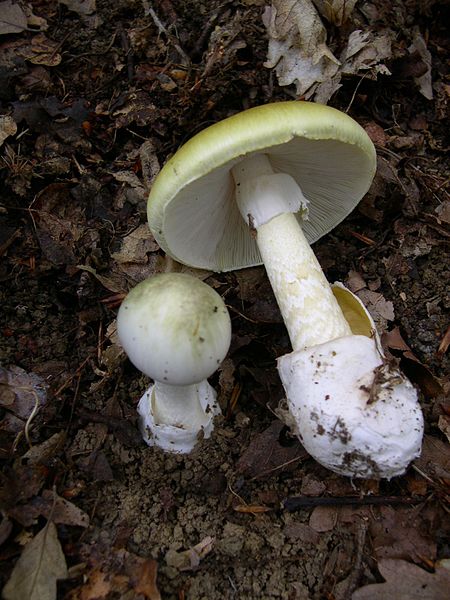
Many species of mushroom are poisonous to humans. Some only cause digestive problems. Others can cause allergic reactions, hallucinations, and even severe organ failure...and death. Oddly enough, one mushroom (the false morel) can be eaten when cooked, but is poisonous when eaten raw!
The Structures of Fungi
As mentioned earlier, fungi (except for yeasts) are made up of hyphae. Hyphae are long filaments.
Below is a photo of the mold Penicillium. The part labeled number one is a hypha.
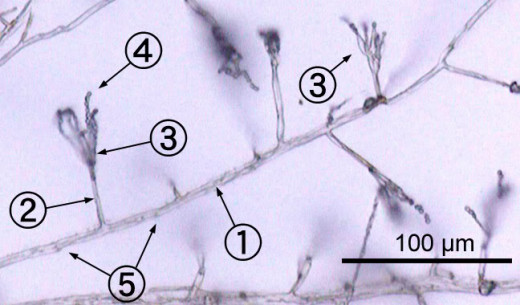
1. hypha 2. conidiophore 3. phialide 4. conidia 5. septa.
As hyphae grow, they branch off (almost like the branches or roots of trees) forming a mycelium.
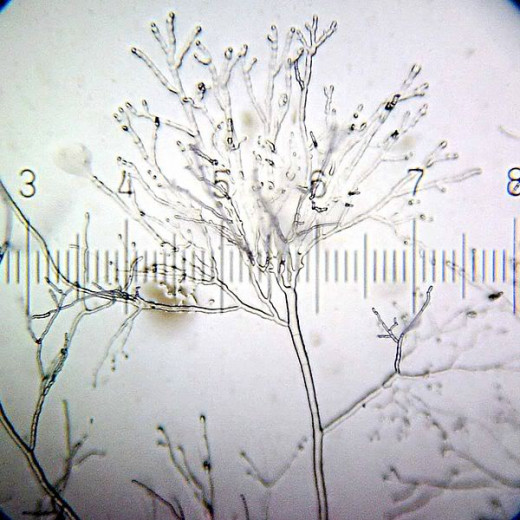
This is a mycelium. It's a group of hyphae that are all branching off one another like a tree.
You can find out more about the structure of fungi in the video below.
The Structure of Fungi
What is Mycology?
It's the study of fungi! Yes, there is a whole branch of science dedicated to studying fungi!
How do fungi eat?
They absorb their nutrients from their environment.
Fungi secrete enzymes that break down (digest) things such as leaves, branches, fruit, bread, and dead animals in their environment. The fungi are then able to absorb the broken down substance.
Instead of breaking down and absorbing dead things, some fungi act as parasites and live on or in other living things. Ringworm and some types of yeast (such as the yeast that causes thrush) are examples of parasitic fungi.
This is mold growing on a peach.
Here's a time lapse of mold growing on a peach. Watch what happens to the peach as the mold grows on it!
The images were taken about every 12 hours apart for a period of six days. Watch the peach....
Fungi - their growth and reproduction
Uses of Fungi
Although some fungi are undesirable to humans, some fungi are very useful to us!
Fungi can destroy many things, including paint, leather, cloth, food, and paper. It can also cause disease in humans.
Yet certain types of fungi are very useful for people. We use a type of fungi called yeast in cooking many types of breads. Some cheeses have a type of fungi in them. Camembert and Roquefort are examples of cheeses with fungi in them. Want to guess what the fungi in those types of cheese is? Penicillium! Many types of antibiotics are made of fungi too.
Fungi: Mushrooms, Toadstools, Molds, Yeasts, and Other Fungi
With beautiful photographs and interesting information about fungi!
Phylum of Fungi
Zygomycetes
Ascomycetes
Basidiomycetes
Chytridiomycota
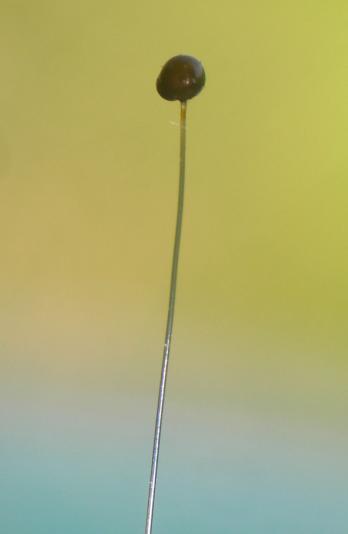
Zygomycetes: A phylum in the Fungi Kingdom
Zygomycetes, which is a phylum in the fungi kingdom, are organisms which grow spherical spores on the tips of hyphae.
Zygomycetes can reproduce both sexually and asexually. During the asexual part of their life cycle, spores are produced by a single organism and are then released and blown to new places by the wind.
During the sexual reproductive stage, two hyphae from two different organisms grow together, allowing their nuclei to fuse resulting in a zygosporangium. The newly formed zygotes then undergo meiosis and germinate, growing a spore producing sporangium which releases spores into the air.
Watch this animation of the life cycle of Zygomycetes
Animation of the life cycle of Zygomycetes
Note: Click the tab that says "animation" at the top of the page. Next click the button that says, "narrated" at the bottom.
Ascomycota - a phylum in the Fungi Kingdom
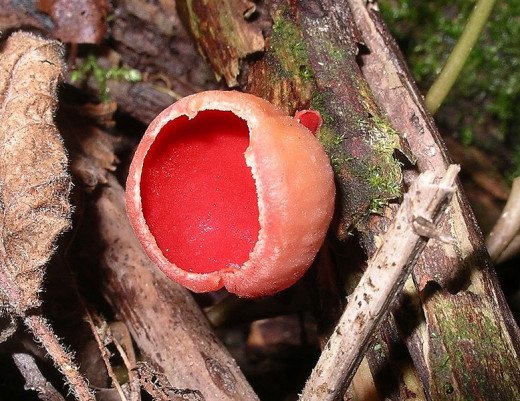
Ascomycota are the "sac fungi." Spores of most species in this phylum are formed in a microscopic saclike structure called an ascus. These ascus usually form with the hypae of a cup-shaped structure.
Some examples of species in the Ascomycota phlum include truffles, morels, brewer's yeast and baker's yeast, cup fungi, Penicillium, and Dead Man's Fingers.
Basidiomycota - a phylum in the Fungi Kingdom
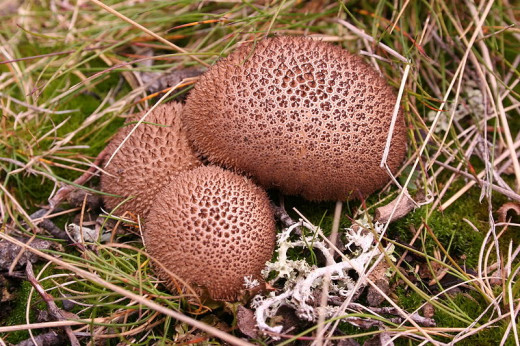
Members of the Basidiomycota phylum include mushrooms, puffballs, stinkhorns, bracket fungi, jelly fungi (no, not jellyfish!), earth stars, smuts, bunts, rusts, mirror yeasts, and other organisms.
This phylum gets it's name from the club-shaped reproductive structure, called a basidia, that many species in this phlyum have.

Chytridiomycota - the simplest and smallest organisms in the Fungi Kingdom
Most organisms in this division of fungi are aquatic and are found in fresh water or marine habitats. Some parasitic Chytridiomycota organisms live on plants or decaying insect bodies. Flagella enable the spores of organisms in the Chytridiomycota division to swim. None of the other phylum have fungi with flagella.
Water molds, which are found either in water or wet soil are an example of a Chytrid (an organism in the Chytridiomycota division of Fungi).
Another Chytrid called a Batrachochytrium dendrobatidis can kill amphibians and may be part of the reason for the decline in amphibians.
Symbiotic relationships that include fungi - Mutualism - where both partners in the relationship benefit from the other
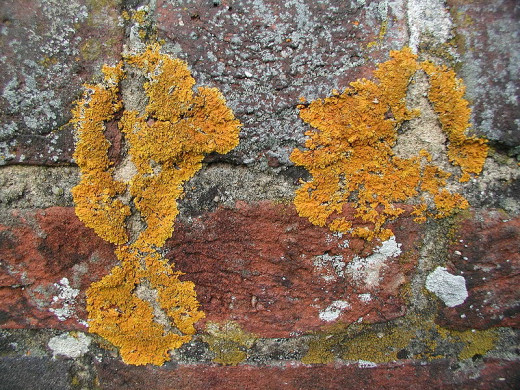
Fungi and plants, as well as fungi and algae, often form symbiotic, mutualistic relationships. The fungi helps provide minerals to the plant or algae, and the plant or algae provides carbohydrates it made during photosynthesis to the fungi.
- A mycorrhiza is a mutualistic relationship between fungi and the roots of plants. In some mycorrhiza, the hyphae of the fungi actually penetrate the roots of the plants. In other mycorrhizae, the hyphae wrap around the plant roots. In both cases, the fungi provide the plants with phosphorus and other minerals through the plants' roots. The plant, in turn, offers the fungi carbohydrates.
- Lichens are a combination of a fungus and a photosynthetic algae or cyanobacterium, working together. The photosynthetic algae or cyanobacterium is located in-between the layers of the hyphae! Lichens can grow in habitats that are difficult for many other species to inhabit. They can grow on bare rocks (and help to break the rocks down), on bare soil, on the trunks of trees, in deserts, and in the Arctic!
Characteristics of Fungi - Bozemanbiology (Paul Anderson) discusses the characteristics of fungi.
Mushrooms and Other Fungi of North America - An excellent field guide for learning about Fungi!
Fungi Lab
Collect some fungi from your yard and look at it under a dissecting microscope or a magnifying glass. If you can find some mushrooms (or purchase some from the store), cut into them and look at the structures inside. Can you find the gills?
Can you find lichens on tree branches or tree trunks? How about a puffball?
Biology
A list of pages in this biology series
Homepage: Biology: Information, Videos, and Labs
Unit 1 on Cell Biology
Unit 2 on Genetics
Labs, Information, And Videos For High School Students Studying Genetics.
Unit 3 on The History of Life on Earth
Unit 4 on Ecology
Ecological Principles / Populations
Biological Communities - Symbiosis, Niches, and Biomes
Global Changes And The Environment
Unit 5 on Diversity
An Introduction to Taxonomy - The Kingdoms and Domains Of Life
Learning About Viruses And Bacteria
Protists: Paramecium, Amoebas, Algae, Diatoms, Euglena, and Others
Unit 6 on All About Plants
Unit 7 on The Animal Kingdom: Invertebrates
The Animal Kingdom - An Introduction
The Cnidarians: Jellyfish, Sea Anemones, Hydrozoans, and Corals
Earthworms, Christmas Tree Worms, Leeches, and Other Annelids
Check back later for additional biology units!



